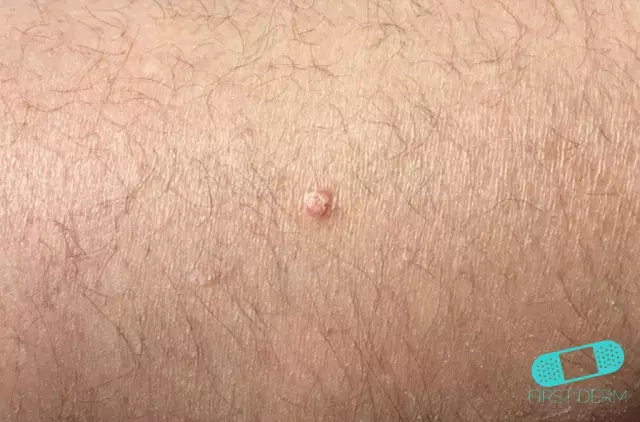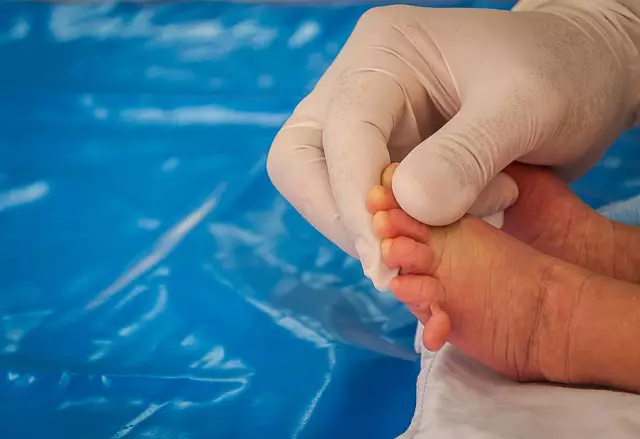- Author Rachel Wainwright [email protected].
- Public 2023-12-15 07:39.
- Last modified 2025-11-02 20:14.
Hypoxia

Hypoxia is a pathological condition characterized by oxygen starvation of individual organs and tissues or the body as a whole. It develops with a lack of oxygen in the blood and inhaled air or with violations of the biochemical process of tissue respiration. The consequences of hypoxia are irreversible changes in vital organs - the brain, central nervous system, heart, kidneys and liver. To prevent complications, various pharmacological agents and methods are used that increase the delivery of oxygen to the body and reduce the need for tissues in it.
Symptoms of hypoxia
All symptoms of hypoxia can be conditionally divided into pathological and compensatory.
Pathological signs of oxygen deficiency include:
- Chronic fatigue;
- Depressive states;
- Insomnia;
- Deterioration of vision and hearing;
- Frequent headaches;
- Chest pain;
- Sinus arrhythmia;
- Spatial disorientation;
- Dyspnea;
- Nausea and vomiting.
Compensatory symptoms of hypoxia can be any disturbances in the functioning of various organs or systems of the body:
- Deep and heavy breathing;
- Strong heartbeat;
- Change in total blood volume;
- Elevated leukocyte and red blood cell count;
- Acceleration of oxidative processes in tissues.
Classification of hypoxia
Depending on the causes of occurrence, the following types of hypoxia are distinguished:
- Exogenous - a decrease in the partial pressure of oxygen in the inhaled air at low atmospheric pressure, in closed rooms and at high altitudes;
- Respiratory - oxygen deficiency in the blood with respiratory failure;
- Hemic - a decrease in blood capacity in case of anemia and inactivation of hemoglobin by oxidants or carbon monoxide;
- Circulatory - circulatory insufficiency in the heart or blood vessels in combination with a large arteriovenous oxygen difference;
- Histotoxic - improper use of oxygen by tissues;
- Overload - excessive loads on organs and tissues during hard work, epileptic seizures and other cases;
- Technogenic - constant stay in a polluted environment.
Hypoxia is acute and chronic. The acute form is short-lived and appears, as a rule, after intense physical activity - jogging or fitness classes. Oxygen starvation of this kind has a mobilizing effect on a person and triggers adaptation mechanisms. But sometimes acute hypoxia can be caused by pathological processes - airway obstruction, heart failure, pulmonary edema or carbon monoxide poisoning.
Each organ has a different sensitivity to lack of oxygen. First of all, the brain suffers. For example, in a stuffy, unventilated room, a person very soon becomes lethargic, cannot concentrate, and experiences fatigue and drowsiness. All these are signs of extinction of brain functions even with a slight decrease in the level of oxygen in the blood, which quickly returns to normal in the fresh air.
Chronic hypoxia is accompanied by increased fatigue and occurs in diseases of the respiratory and cardiovascular systems. Smokers are also constantly deprived of oxygen. The quality of life is markedly reduced, although irreversible changes in internal organs do not occur immediately.
The degree of development of this form of hypoxia depends on many factors:
- The type of pathology;
- Localization;
- Duration and severity;
- Environmental conditions;
- Individual sensitivity;
- Features of metabolic processes.
The danger of chronic hypoxia is that it leads to disorders that reduce the ability of tissues to absorb oxygen. As a result, a vicious circle is formed - the pathology feeds itself, leaving no chance for recovery. This applies to both general and local disease, which affects only part of the body with atherosclerosis, blood clots, embolism, edema and tumors.
Consequences of hypoxia
Hypoxia affects the work of all body systems:
- It impairs the detoxifying and excretory functions of the kidneys and liver;
- Disrupts the normal functioning of the digestive system;
- Promotes dystrophic changes in connective tissue;
- Leads to the formation of osteoporosis, arthrosis, arthritis, osteochondrosis.
On the part of the central nervous system, there is a slowdown in the thinking process, a decrease in the volume of analyzed information, a deterioration in memory and speed of reactions.
The consequences of hypoxia, dangerous to health and life:
- Premature aging of the body;
- Decreased immunity and susceptibility to infections;
- Weakening of antitumor protection;
- Depletion of adaptation reserves.
For these reasons, timely diagnosis and establishment of the etiology of hypoxia is important.
Hypoxia treatment

Prevention and treatment of hypoxia is carried out taking into account the reasons that caused the oxygen deficiency. As a rule, in acute form, injections of direct antihypoxants are used as first aid. These are drugs such as amtizol, actovegin, instenon, mildronate, sodium oxybutyrate, trimetazidine and others. In chronic hypoxia, herbal medicine is preferred. The choice of an antihypoxant plant depends on which organ is affected.
Hypoxia treatment is carried out in various directions:
- Restoration of energy metabolism;
- Activation of oxygen supply to tissues;
- Improving metabolism and detoxification;
- Reducing tissue oxygen demand.
Hypoxia must be diagnosed and treated in time to prevent the development of other chronic diseases. It is equally important to carry out preventive measures, since the lack of oxygen is easier to prevent than to eliminate its consequences. To do this, you need to lead a healthy lifestyle, get rid of bad habits, as well as regularly engage in physical education and tempering.
YouTube video related to the article:
The information is generalized and provided for informational purposes only. At the first sign of illness, see your doctor. Self-medication is hazardous to health!






